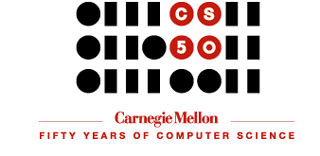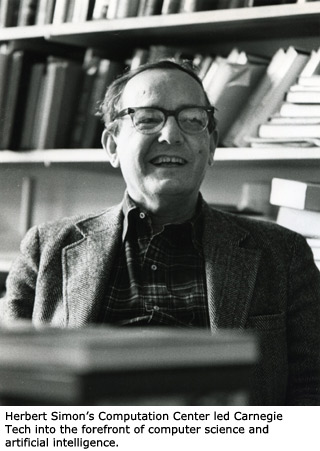In 1956, America stood on the cusp of change: the first transatlantic telephone cable went into operation, the Eisenhower Interstate System began to transform domestic transportation, and Elvis Presley’s “Heartbreak Hotel” filled the airwaves. Around the world, the air was filled with revolution: Viet Nam was heating up, Egypt seized the Suez Canal, Budapest challenged Moscow, and Castro awakened the rebels in Cuba.

In Pittsburgh, in the basement of the then Graduate School of Industrial Administration building at the Carnegie Institute of Technology, associate dean Herbert Simon was orchestrating another type of revolution: the electronic revolution. With a unique interdisciplinary mix of psychology, economics, organizational behavior and a brand new IBM 650, Simon’s Computation Center led Carnegie Tech into the forefront of computer science and artificial intelligence.
Fifty years later, Carnegie Mellon University is still leading the world, not just in “thinking machines,” but also in software development, applied research, computer architecture and robotics. Just as Interstate 80 and international phone calls are now part of everyday life, so are many computer innovations that were inspired by long hours of research in the backrooms of Carnegie Mellon: computers that play chess (and win), software that lets your computer take dictation, robotic vehicles that can drive themselves, plus search engines for the Web and even the MacIntosh OS X operating system.

The School of Computer Science will host a campus-wide celebration, April 19-22, to commemorate the past achievements and to celebrate future endeavors that will continue to revolutionize the world. Key events will include a semi-centennial symposium and a celebration of the newest building on campus, the Gates Center for Computer Science.
Related Links:
CS 50
School of Computer Science
Remembering Herbert Simon



